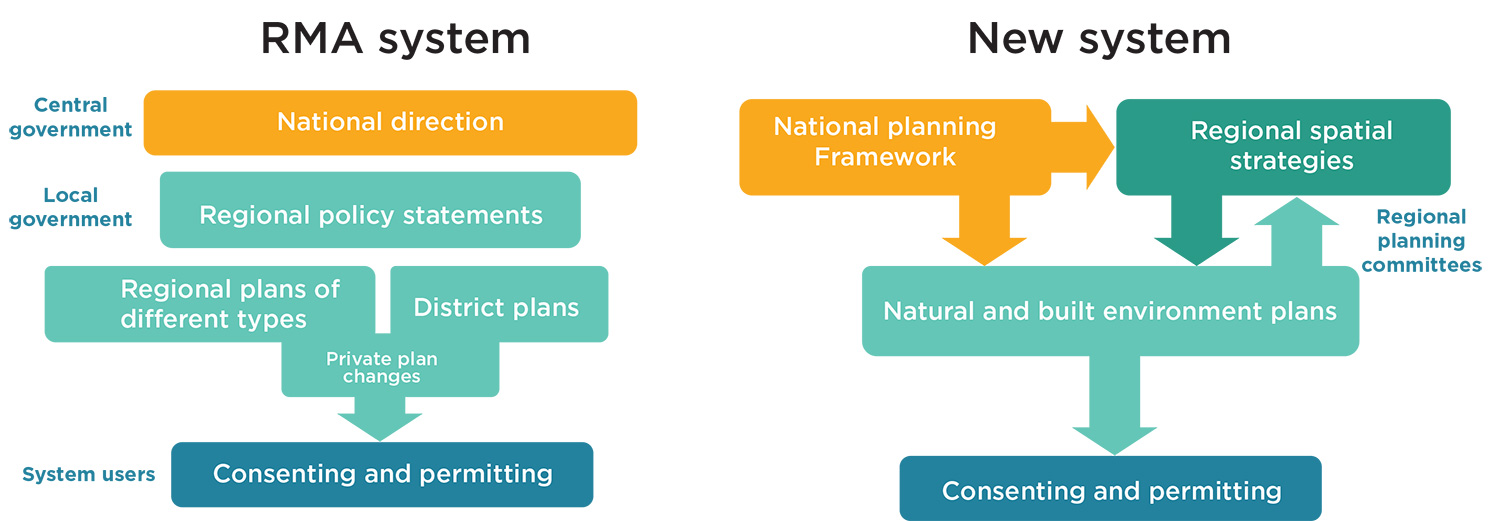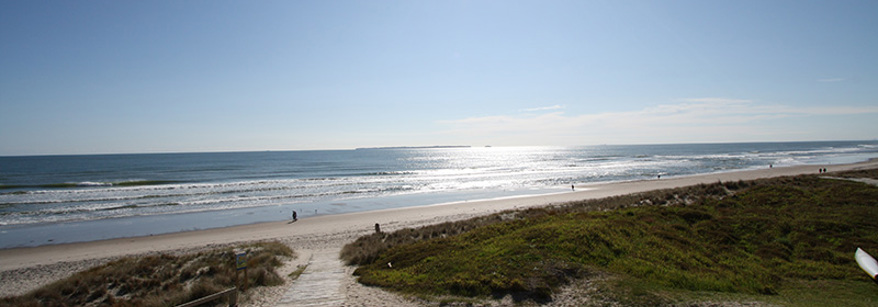The new legislation changes the way we manage the environment, natural resources and land. The transition from the RMA to the SPA and NBA will occur sequentially and region-by-region, with some provisions of the new Acts applying immediately. Read more.
Why is the resource management system changing?
The Resource Management Act 1991 (RMA) is Aotearoa New Zealand’s main law governing how we use our natural and built resources. Now more than 30 years old, the RMA is not delivering for the environment or for development, and is no longer fit to help us respond to emerging issues, such as adapting to the impacts of climate change.
Central Government is reforming the resource management system to create one that’s more certain and efficient – a system that supports development within environmental limits and is required to give effect to the principles of Te Tiriti o Waitangi (the Treaty of Waitangi).
At its heart is te Oranga o te Taiao – a concept drawn from te ao Māori, and an intergenerational ethic that speaks to the health and wellbeing of the natural environment, and the essential relationship between a healthy environment and its capacity to sustain all life.
You can read an overview from the Ministry for the Environment.

What it means for Toi Moana
As the regional council for the Bay of Plenty we look after land, air, and water resources, supporting biodiversity and biosecurity, regional transport services, and building more resilient communities in the face of climate change and natural hazards.
Our priority is ensuring the new Resource Management System works in the best interest of our local communities and environments.
The new Acts require genuine partnership with te Tiriti partners. We’ll be connecting with iwi/hāpu in different and new ways, and we’re working that out together. These laws have been designed by central Government to one day work in tandem with a Climate Change Adaptation Act, and together the three Acts are intended to eventually replace the Resource Management Act (RMA).
There is a lot to work through to operationalise the new legislation and we are actively involved to ensure this transition benefits both our local communities and our environment.
When is change happening?
Aotearoa New Zealand is now operating under two new pieces of legislation: the Natural and Built Environment Act and the Spatial Planning Act.
The RMA is still operational for the next 7–10 years. The transition will involve integrating parts of the new Acts while still relying on established RMA procedures.
With the new legislation taking effect, a handful of specific provisions are live as of 24 August 2023.
This includes aspects related to consents, freshwater planning, contaminated land, aquaculture, and bolstered compliance and enforcement powers and tools. Freshwater consent applications lodged on or after this date will have to be limited in consent duration.
Transitioning from RMA to SPA and NBA
The NBA has a fast-track consenting process for certain infrastructure and housing activities. The process is available for both resource consents and for notices of requirement to designate land. Read more.
During the transition to the new RM system, some freshwater-related resource consents issued under the RMA will have a new maximum duration. These will vary region-by-region as regional planning committees develop their NBE plans. Read more.
Requiring authorities under the NBA
The NBA contains provisions about who is or who can be a requiring authority. A requiring authority is a person or entity that can require land to be set aside (designated) for a public purpose, such as a hospital, school or network. The new provisions will take effect from three months after Royal Assent. Read more.
New and updated compliance and enforcement (C&E) powers and tools will come in progressively over the next two years. These include measures to support deterrence, more flexible intervention, and councils’ ability to recover costs associated with their C&E activities. Read more.
The NBA addresses the management of contaminated land differently to the RMA. The emphasis has shifted to the ‘polluter pays’ principle, meaning those who cause or allow contamination to occur will bear the costs of managing the pollution. There is also a clear responsibility for regulatory agencies and landowners to prevent or remedy harm from contamination and to minimise further adverse effects. Some contaminated land provisions start immediately. Read more.
During the transition to the new RM system, a number of changes are being implemented to the RMA related to aquaculture management. Some come into effect from 23 August 2023. These include mapping changes to aquaculture settlement areas and increased powers for the Minister of Aquaculture to make decisions. Read more.


